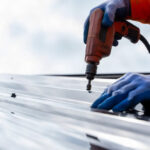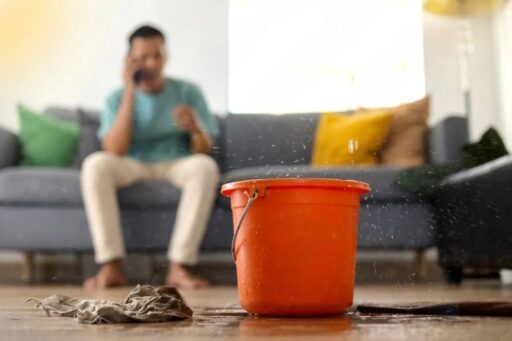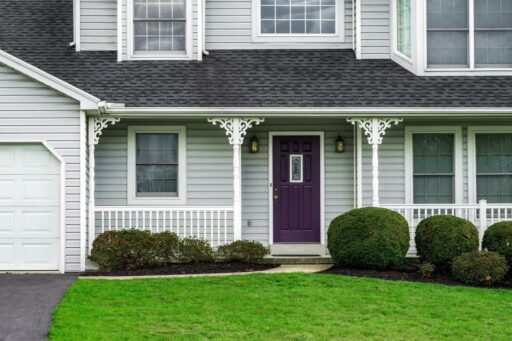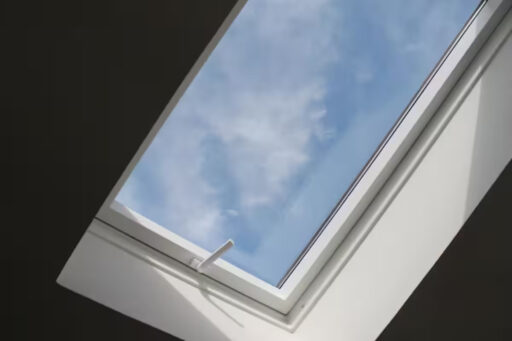Flat roofs are a popular choice for many properties due to their modern aesthetic and space efficiency. Understanding how flat roofs function is essential for property owners and managers. These roofs, while appearing flat, typically have a slight slope to facilitate water runoff. Without this slope or adequate drainage systems, water tends to pool, leading to leaks and potential damage. Therefore, understanding the intricacies of flat roof drainage is crucial for preventing problems.
What Is Flat Roof Drainage?
Flat roof drainage systems are designed to channel water away from the roof efficiently. Unlike pitched roofs, which naturally direct water toward the edges, flat roofs rely on additional components such as drains, scuppers, and gutters. These elements work together to ensure that water does not accumulate on the roof’s surface.
Key components of flat roof drainage:
- Drains: Typically located at low points on the roof, these allow water to enter the drainage system.
- Scuppers: Openings placed at the edge of the roof, enabling water to flow into downspouts or gutters.
- Gutters: Channels that collect and divert water away from the building’s foundation.
A well-maintained drainage system is not only essential for preventing water damage but also plays a critical role in the overall health of your building. By ensuring proper drainage, you can protect your property from potential water-related issues and increase the longevity of your roof.
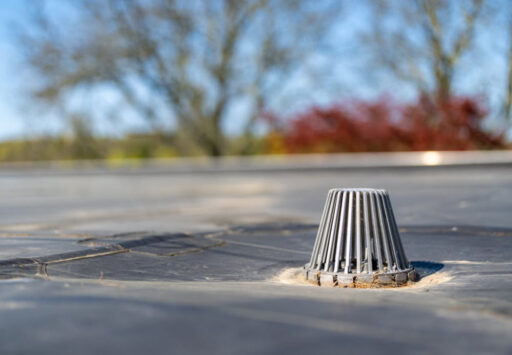
Common Roof Drainage Problems
Despite the best design intentions, flat roofs can encounter several drainage issues. Identifying these common problems early can save you from costly repairs and extensive damage to your property.
Frequent drainage challenges:
- Ponding Water: This occurs when water remains on the roof for more than 48 hours after rainfall. It can lead to leaks and structural damage if not addressed promptly.
- Clogged Drains: Debris such as leaves and dirt can obstruct drains, preventing water from flowing off the roof. Regular cleaning is necessary to avoid this issue.
- Poor Sloping: A lack of proper slope can cause water to pool in certain areas, exacerbating drainage issues.
These problems, if left unresolved, can lead to significant damage over time. Addressing them promptly is crucial for protecting your property and maintaining the integrity of your flat roof.
Causes of Flat Roof Drainage Issues
Understanding the causes of drainage issues is vital for preventing them. Several factors can contribute to these issues, each requiring different approaches to address effectively.
Primary causes:
- Design Flaws: Inadequate slope or poorly designed drainage systems can lead to persistent water accumulation. Ensuring that your roof is constructed with proper drainage considerations is crucial.
- Environmental Factors: Heavy rainfall, snow, and debris can exacerbate drainage issues. Regular cleaning and maintenance can mitigate these environmental impacts.
- Wear and Tear: Over time, drainage components can become damaged or worn, reducing their effectiveness. Regular inspections can help identify these issues early.
Addressing the root causes of drainage problems not only helps prevent immediate issues but also ensures the longevity of your flat roof. By staying informed about potential causes, you can take appropriate measures to protect your property.
Signs of Poor Flat Roof Drainage
Recognizing the signs of poor drainage is essential for preventing further damage. By identifying these indicators early, you can take corrective action and protect your property from potential water-related issues.
Warning signs to watch for:
- Visible Water Pools: Persistent water accumulation after rainfall is a clear sign of drainage issues.
- Leaks or Damp Spots: Water infiltration can lead to damp spots on ceilings or walls, indicating an issue with your roof’s drainage.
- Mould or Mildew Growth: Excess moisture can promote the growth of mould and mildew, affecting your property’s indoor air quality.
Identifying these signs early allows you to address drainage issues promptly. By taking action as soon as these indicators appear, you can prevent more extensive damage and costly repairs. Regular inspections and maintenance can help you spot these warning signs before they escalate into more serious problems. By staying vigilant, you can ensure that your flat roof remains in optimal condition.
Preventative Measures
Taking preventative measures is crucial for maintaining effective drainage on your flat roof. By implementing these strategies, you can minimize the risk of drainage issues and extend the lifespan of your roof.
Effective preventative strategies:
- Regular Inspections: Schedule routine inspections to identify potential drainage issues early. This proactive approach allows you to address problems before they become major concerns.
- Clean Gutters and Drains: Regular cleaning prevents debris from obstructing water flow, ensuring that your drainage system functions effectively.
- Check for Proper Slope: Ensure that your roof has the appropriate slope to facilitate water runoff. Correcting any slope issues can prevent water from pooling on the roof.
Implementing these measures not only prevents immediate issues but also contributes to the overall longevity of your roof. By staying proactive, you can safeguard your investment and avoid costly repairs in the future.

Solutions for Existing Flat Roof Drainage Problems
If you are already facing drainage issues, there are several solutions available to address these problems. By taking swift action, you can prevent further damage and restore your roof’s effectiveness.
Solutions for common problems:
- Install Additional Drains: If your roof has inadequate drainage, consider installing additional drains to improve water flow.
- Repair or Replace Damaged Components: Ensure that all drainage components, such as gutters and scuppers, are in good condition. Repair or replace any damaged parts to maintain effective drainage.
- Re-slope the Roof: If poor sloping is causing drainage issues, consult a professional to re-slope the roof and ensure proper water runoff.
Addressing drainage issues effectively requires a combination of solutions tailored to your specific situation. By consulting with professionals, you can ensure that your flat roof remains in optimal condition.
Importance of Regular Maintenance
Regular maintenance is crucial for preventing drainage issues and ensuring the longevity of your flat roof. By committing to a maintenance schedule, you can identify potential problems early and take corrective action.
Key maintenance activities:
- Routine Inspections: Regular inspections help identify potential drainage issues before they escalate.
- Seasonal Cleaning: Clean gutters and drains regularly, especially during the fall when debris is more likely to accumulate.
- Monitor for Changes: Keep an eye on any changes in the roof’s condition, such as new water pools or damp spots.
A proactive approach to maintenance not only helps prevent immediate issues but also ensures that your roof remains in optimal condition for years to come. By staying committed to regular maintenance, you can safeguard your investment.
When Your Flat Roof Needs Professional Attention
In some cases, drainage issues may be a sign of deeper structural problems that require more than routine maintenance. If your flat roof continues to experience water pooling or leaks despite proper care, it may be time to consider flat roof repair. Repairs can address localized issues like damaged drains or worn-out membranes.
However, if drainage issues are widespread or the roofing system is nearing the end of its lifespan, flat roof replacement might be the most cost-effective long-term solution. Consulting a roofing professional can help determine the best course of action based on the condition of your roof.
Professional Help for Roof Drainage Issues
In some cases, professional assistance is necessary to address drainage issues effectively. Consulting with experts can provide you with the knowledge and resources needed to resolve complex issues.
When to seek professional help:
- Persistent Drainage Issues: If you are unable to resolve drainage problems on your own, seek professional assistance.
- Structural Concerns: If drainage issues have led to structural damage, consult with experts to assess and repair the damage.
- Complex Solutions: For complex drainage solutions, such as re-sloping the roof, professional expertise is essential.
Consulting with professionals not only helps resolve existing issues but also provides you with valuable insights into preventative measures. By working with experts, you can protect your property and maintain the integrity of your flat roof.
Summary
Flat roof drainage is a critical aspect of maintaining your property. By understanding common issues, their causes, and preventative measures, you can protect your investment and ensure the longevity of your roof. Regular maintenance and professional assistance when needed can help you avoid costly repairs and keep your property in optimal condition. Remember, effective drainage is not just about preventing immediate issues; it also contributes to the overall health of your building.



